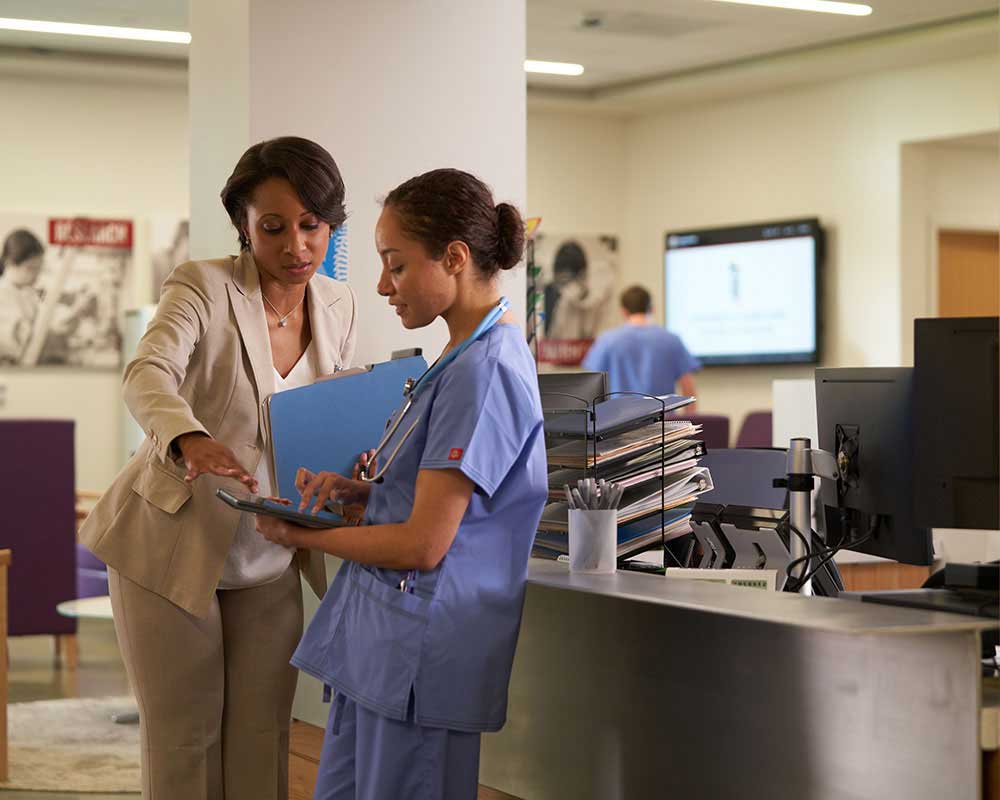Why Medical Administration is Important for Smooth Medical Care Workflow
Why Medical Administration is Important for Smooth Medical Care Workflow
Blog Article
Finest Practices in Medical Administration for Improving Effectiveness and Reducing Expenses
In the ever-evolving landscape of healthcare, the pursuit of finest techniques in clinical administration is extremely important for enhancing performance and curbing expenses. By incorporating sophisticated modern technologies such as electronic health documents and telemedicine, healthcare service providers can simplify operations and boost patient treatment.
Leveraging Advanced Innovation
The combination of electronic services into medical care systems has changed the way centers run, streamlining procedures and improving person treatment. By streamlining client details, EHRs get rid of the requirement for troublesome documents and promote seamless communication among health care companies.
Telemedicine is an additional technical advancement that has reinvented individual interaction. It provides ease for both clients and health care specialists by allowing remote consultations, which can minimize the requirement for in-person check outs and enhance consultation organizing. Additionally, telehealth platforms can prolong health care accessibility to rural or underserved areas, linking gaps in treatment distribution.
Moreover, using Expert system (AI) and device knowing is ending up being increasingly widespread in predictive analytics, enabling early detection of prospective health concerns and even more enlightened decision-making. These technologies, when integrated properly, can boost diagnostic accuracy and customize client treatment strategies, eventually resulting in improved medical care outcomes and operational efficiency.
Optimizing Source Allotment
By strategically managing resources such as workers, tools, and finances, health care centers can dramatically improve their functional efficiency, enhance individual results, and decrease unnecessary expenditures. The first step in enhancing source allocation includes performing a detailed assessment of current assets and determining areas where resources may be underutilized or exhausted.
Focusing on resource appropriation based on client needs and solution needs is essential. Carrying out flexible staffing designs can additionally maximize labor sources by changing workers allocation in action to rising and fall individual quantities.
Funds should be diligently monitored and assigned with strategic foresight to sustain both temporary operational needs and lasting institutional objectives. This consists of investing in training programs that enhance staff proficiencies and taking on energy-efficient practices that reduce functional expenses (medical administration). Inevitably, an enhanced resource allowance strategy fosters a lasting healthcare setting that is responsive, reliable, and monetarily sensible
Streamlining Operations Procedures
When medical care centers aim to improve functional effectiveness, improving process procedures becomes a pivotal emphasis. Efficient workflows minimize redundancy, remove unneeded steps, and enhance sychronisation among medical care specialists. This technique not just speeds up solution delivery however also boosts the high quality of person treatment.

Next, modern technology integration plays a significant duty in simplifying workflows. Implementing digital health and content wellness records (EHRs) and digital doctor order entry (CPOE) systems decreases documentation, decreases human mistake, and makes certain info comes to all pertinent employees. Additionally, leveraging telemedicine platforms can improve individual consultations and follow-ups, minimizing the strain on physical facilities.

Eventually, streamlined workflows cause cost decreases and boosted person fulfillment, cultivating a more lasting medical care atmosphere.
Enhancing Data Administration
Building upon structured operations, maximizing data monitoring comes to be an important part in advancing medical care management. Reliable information administration systems are vital for keeping exact individual documents, enhancing decision-making, and making sure compliance with regulative criteria. By executing robust data management options, health care centers can improve the high quality of client care while all at once reducing functional costs.
One secret facet of improving data management is the integration of sophisticated digital health and wellness document (EHR) systems. These systems help with the seamless exchange of client information throughout various divisions, decreasing replication of tests and minimizing mistakes. A well-designed EHR system supports data analytics, enabling doctor to recognize patterns and make notified decisions regarding client treatment.
In addition, guarding client information is paramount. Adopting Full Article extensive cybersecurity actions, consisting of encryption and regular audits, makes certain the stability and discretion of sensitive details. This not only protects patients but likewise preserves the organization's track record.
Investing in personnel training is one more crucial aspect. Informing medical care specialists on data administration methods improves their capability to properly utilize technology, resulting in enhanced person results. To conclude, enhancing data administration with innovative innovation and comprehensive training is essential for achieving effectiveness and price decrease in clinical administration.
Fostering Collaborative Interaction
An essential component beforehand medical administration is fostering collaborative interaction among medical care experts. Effective interaction is vital for making certain smooth person treatment, optimizing treatment results, and minimizing errors. By urging open dialogue and sychronisation across multidisciplinary groups, medical care companies can improve their functional effectiveness and minimize unneeded expenses.
Central to this approach is the combination of communication modern technologies such as electronic health documents (EHRs) and secure messaging systems, which assist in the rapid exchange of critical patient info. These tools make it possible for doctor to access and share data in real time, ensuring that all employee are notified and aligned in their decision-making procedures. Regular group meetings and interdisciplinary rounds can even more promote a culture of cooperation and responsibility.
Educating programs concentrated on improving communication skills are additionally crucial. Ultimately, fostering joint interaction leads to improved healthcare distribution and cost savings.

Final Thought
Incorporating innovative technology, such as electronic wellness documents and telemedicine, alongside maximized source allowance and streamlined operations procedures, is essential for enhancing efficiency in clinical administration. Efficient data management and cultivating joint interaction amongst medical care groups are crucial for decreasing redundancies and enhancing treatment top quality. By view it now prioritizing preventive care and participating in high quality enhancement initiatives, medical care organizations can accomplish significant expense financial savings and boosted client results, therefore making sure lasting medical care distribution in a progressively complicated atmosphere.
Report this page